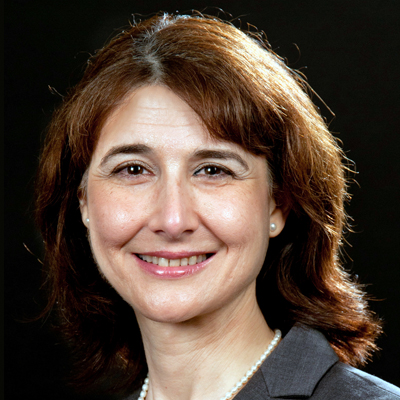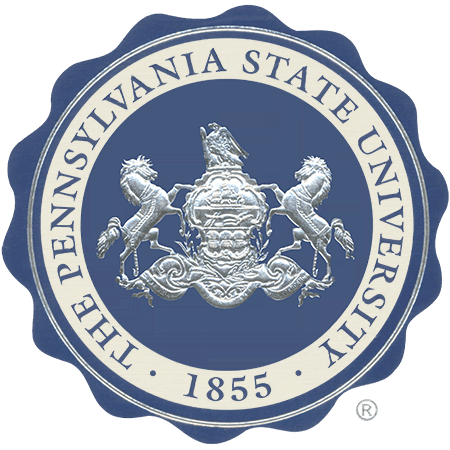Using computers to provide insights and discoveries of new materials
Using the power of modern computers to apply the laws of physics to design and investigate materials is a giant step ahead of the traditional approach. Usually researchers have to produce the metal alloy or polymer composite, test it, tweak the production, and then repeat, until the desired properties are obtained. Dr. Susan Sinnott, Head and Professor of Materials Science and Engineering at The Pennsylvania State University, utilizes the predictive power of computers to discover, investigate, and design materials alloys. The computational methodology her team is developing is unique in the field, allowing them to speed up material development for all kinds of applications that are important for modern life, such as lithium-ion batteries, the processors that power computers, the strong yet light materials out of which cars are made, and metal alloys that can function at extremely high temperatures. Dr. Sinnott’s computers also provide a window into behavior of nanomaterials that is still challenging to observe with experimental (lab) equipment. The software, as it’s developed, is offered to the science community as free shareware, so that it can be used by others to advance research at a much quicker pace.
- Dr. Sinnott’s team is working to understand the way in which technologically important coatings grow in plasma chambers, which are also used in processing silicon chip wafers. The simulation results produce movies where they can watch every atom and see how each one contributes to the growing film! This insight is unattainable experimentally and helps the collaborators improve the conditions in their plasma chamber to improve the film properties.
- They are also examining the properties of coatings deposited through plasma. It is known, for example, that materials for implantation in the human body can be made more compatible with human tissue by sterilizing it with plasma. However, the mechanisms by which this takes place is not well understood.
- The team is also investigating the properties of metallic and metal-oxide nanowires that can be used as catalysts and in nano-transistors in devices smaller than the diameter of the human hair. Determining how these nanostructures respond to high temperatures, mechanical deformation, chemical attack, and other conditions is easily done on the computer and the results are used to guide their optimal use in applications.
Bio
When Dr. Sinnott was thirteen years old she was enthralled by Star Trek and Carl Sagan’s Cosmos, both of which sparked a desire to investigate the scientific principles that control the physical world. Today, she is using some of the scientific methods she first became acquainted with on Cosmos, such as quantum mechanics, to design new materials.
Dr. Sinnott’s portfolio is a unique mixture of materials science, physics, chemistry, and engineering that is applied to problems of materials design and discovery. She received her B.S. degree in chemistry from the University of Texas at Austin and her Ph.D. in physical chemistry from Iowa State University. She was a National Research Council Postdoctoral Associate at the Naval Research Laboratory and was on the faculty at the University of Kentucky prior to joining the University of Florida in 2000. Dr. Sinnott is the author of over 200 technical publications, including over 185 journal publications and nine book chapters. She is a Fellow of the American Physical Society, Materials Research Society, American Ceramic Society, the American Association for the Advancement of Science, and the American Vacuum Society.
Dr. Sinnott volunteers for several technical societies and served as President of the American Vacuum Society in 2013. She also serves as Editor-in-Chief, Associate Editor, Principle Editor, or Divisional Associated Editor for several journals in the field and is on the Advisory Committee for Physics Today.
One of her passions is educating and mentoring postdoctoral associates and graduate, undergraduate, and high school students in topics at the forefront of Materials Science and Engineering “When I was an undergraduate student I worked with an outstanding professor, and it made me realize how much I loved doing research,” says Dr. Sinnott. “I wasn’t very good at experimental work but it helped me realize there were other types of research besides working in a laboratory—such as computational work. That experience was important in shaping my future career and I enjoy helping young people find their paths as well.”
Publications
Awards
Fellow of the American Physical Society (2013), Materials Research Society (2012), American Ceramic Society (2011), American Association for the Advancement of Science (2010), and the American Vacuum Society (2005)
Election to Fellowship of a technical society is a distinct honor that indicates recognition by one’s professional peers. It is awarded to those who have made exceptional contributions to the field in the areas of research, education, and service
University of Florida Research Foundation Professor, 2011-2013
Awarded to tenured faculty members at the University of Florida who have a distinguished record of research
University of Florida College of Engineering Doctoral Dissertation Mentoring Award, 2009
An award to encourage and reward excellence, innovation, and effectiveness in mentoring doctoral students through their final dissertation project


